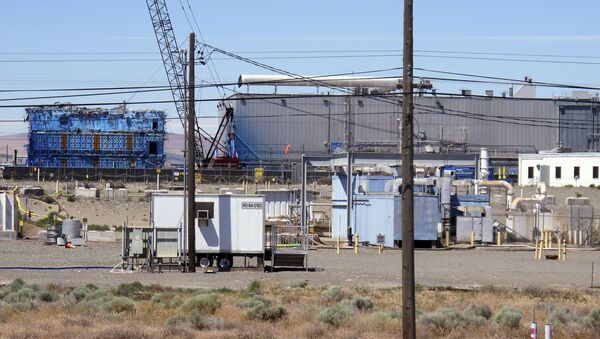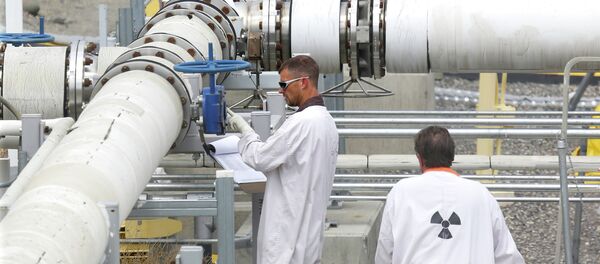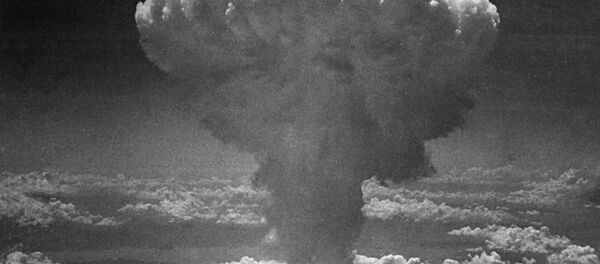A study published this month in the Journal of Environmental Engineering Science reported that small but still dangerous amounts of radioactive elements were found in dust collected by cloth wipes and vacuum cleaners in order to track the potential spread of radiation from one of the United States' most notorious nuclear cleanup sites.
The same study also found radioactive particles in the homes of nuclear workers associated with the Los Alamos National Laboratory in New Mexico and the Rocky Flats Plant in Colorado. All three sites are heavily associated with nuclear weapons production.
It's believed the particles could have found their way into the homes in a variety of ways, including being attached to workers' clothing and being stirred up by wind storms and wildfires, which are common in the region, and blown inside.
The tests found radioactive uranium, thorium, plutonium and americium particles that, while innocuous in the external environment, represent a "potential source of internal radiation exposure" if ingested, warns Marco Kaltofen, a civil engineer affiliated with the Worcester Polytechnic Institute in Massachusetts and author of the study, the Seattle Times reported.
Exposure to these materials increases the risk of cancer, the study noted. Plutonium is "fiendishly toxic, even in small amounts," said Glenn Seaborg, the physicist who discovered the element in 1941, as quoted in a 2011 fact sheet on the Rocky Flats site. The Agency for Toxic Substances and Disease Registry notes in its public health statement on thorium exposure that the radioactive isotopes can sit in the soil for decades and cause lung cancer if inhaled. Uranium ingestion mainly targets the kidneys, the ATSDR notes, while americium destroys and irradiates bone tissue and can cause bone cancers such as leukemia or lymphoma and damage the thyroid.
"These radioactive particles are tiny and difficult to detect once you get a few inches away, but once inside the body, the distance from our tissue is essentially zero," Kaltofen explained. While the skin can handle certain amounts of radiation safely, the body's internal organs have no protection and a tiny amount can prove fatally toxic. Polonium-210, for example, is 250 million times more toxic than hydrogen cyanide, the New York Times reported.
The report's conclusions come from years of testing coordinated with Hanford Challenge, a Seattle-based organization that has fought for decades for accountability in the federal cleanup of the Hanford site. Kaltofen used an unusual technique that involves both electron microscopy and a specialized X-ray analysis that can detect extremely low levels of radioactive particles. The samples were compared to those taken from the Hanford site, which served as a kind of fingerprint for identifying the particles.
The levels found in the Hanford workers' homes represented a health risk exceeding that considered acceptable by the International Commission on Radiological Protection's safety standards. However, the manager of the Radioactive Air Emissions Section of the Washington Department of Health John Martell told the Seattle Times that the level found in the study "is not jumping out to us as a public health risk."
The US Department of Energy (DoE) performs regular environmental monitoring to measure radionuclide concentrations in the air, water and soil, as well as in fish and wildlife "to assure the public that the dose and risk from Hanford contaminants are well understood," the department says.
Hanford Site, or Hanford Nuclear Reservation, is a 586 square-mile site between the Columbia and Yakima Rivers, just upstream from the Tri-Cities and adjacent to Richland. It is roughly half the size of Rhode Island. The site was established in 1943 as part of the Manhattan Project, the United States' top secret program to develop an atomic bomb.
Hanford housed the world's first full-scale plutonium reactor in the world, B Reactor, and was expanded to nine nuclear reactors and five plutonium processing plants. Plutonium manufactured at the site was used in the Trinity blast, the world's first nuclear explosion, as was the fuel for the two atom bombs dropped on the Japanese cities of Hiroshima and Nagasaki by the United States in August 1945, that killed more than 200,000 people. Most of the nuclear fuel for the 60,000 nuclear weapons the United States produced through the 1980s came from the Hanford site, according to the US Department of Energy.
Hanford was decommissioned after the Cold War but remains the storage site for 53 million gallons of liquid nuclear waste and 25 million cubic feet of solid nuclear waste, the DoE website notes. Neither the stored waste nor the waste from production has been properly stored, and large radiation leaks have contaminated much of the area, which remains the nation's largest environmental cleanup site. According to Earth Island Journal, between 1944 and 1972, "as much as 1.7 trillion gallons of liquid waste, radionuclides and hazardous chemicals" were dumped into the Columbia River or into the ground.
The site regularly leaks nuclear contaminants, notably in February 2016 and May 2017, with the planned December 2017 demolition of a Hanford plutonium finishing plant being halted after several workers inhaled contaminated particles, arousing fears of a larger contamination if demolition continued, the Seattle Times reported at the time. Plutonium and americium traces were found up to 10 miles away from the condemned plant in subsequent tests. However, all of Kaltofen's samples came from before the demolition began.
The Yakama Nation, whose reservation sits only 20 miles from the site, for decades fought turning Hanford into a nuclear waste site, as did other affected tribes such as the Nez Perce and Umatilla nations. Three counties around the Yakama reservation have seen high rates of a rare and fatal birth defect called anencephaly, in which a fetus' brain and skull fail to fully form, which is believed to be caused by irradiation, Earth Island reported. Higher rates of anencephaly are also associated with sites in Iraq where the US military used depleted uranium rounds during the Iraq War, Iraqi doctors in Basra and Baghdad have noted.
Indigenous nations in Washington aren't the only ones negatively affected by the US nuclear weapons program: decades of uranium mining in the Navajo Nation have caused extensive irradiation of the countryside, creating a disease known as Navajo Neuropathy, NPR reported. One spring in northeastern Arizona was reported in 2015 to have uranium levels "at least five times greater than safe drinking water standards" by a study published in the journal Environmental Science & Technology. The contamination caused the early deaths of many children who drank from the spring or whose mothers drank the water while pregnant.






